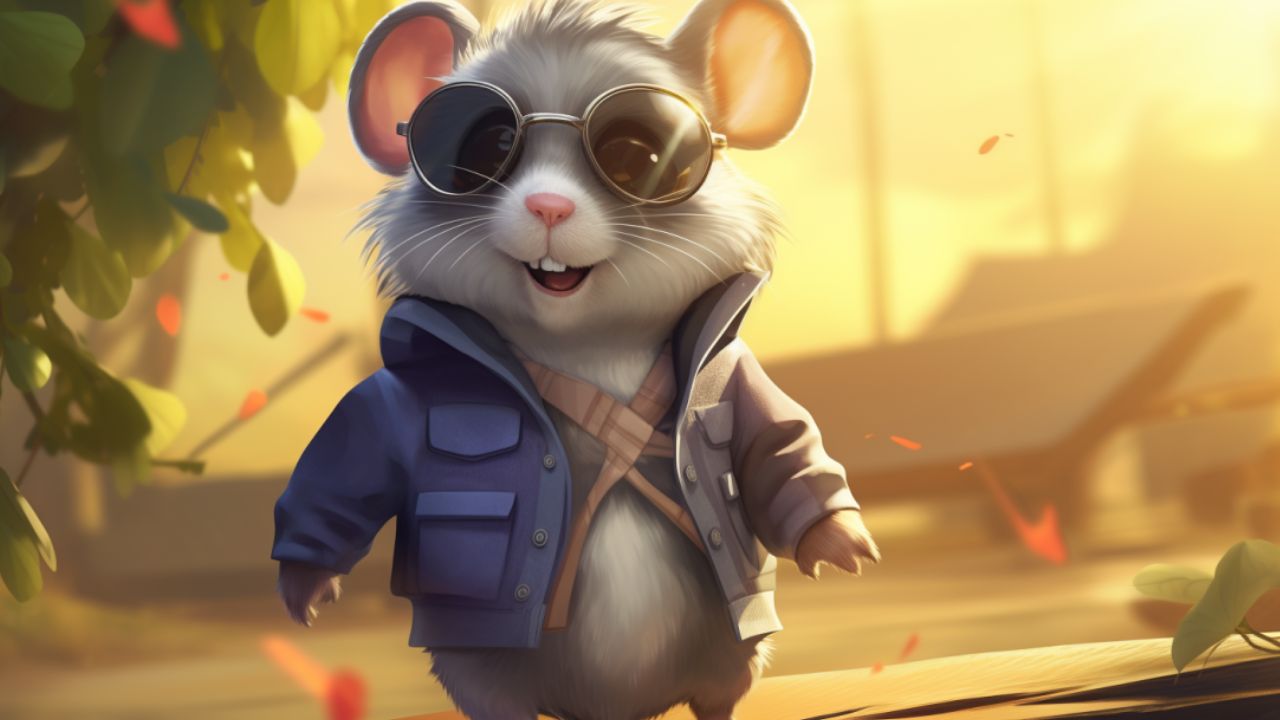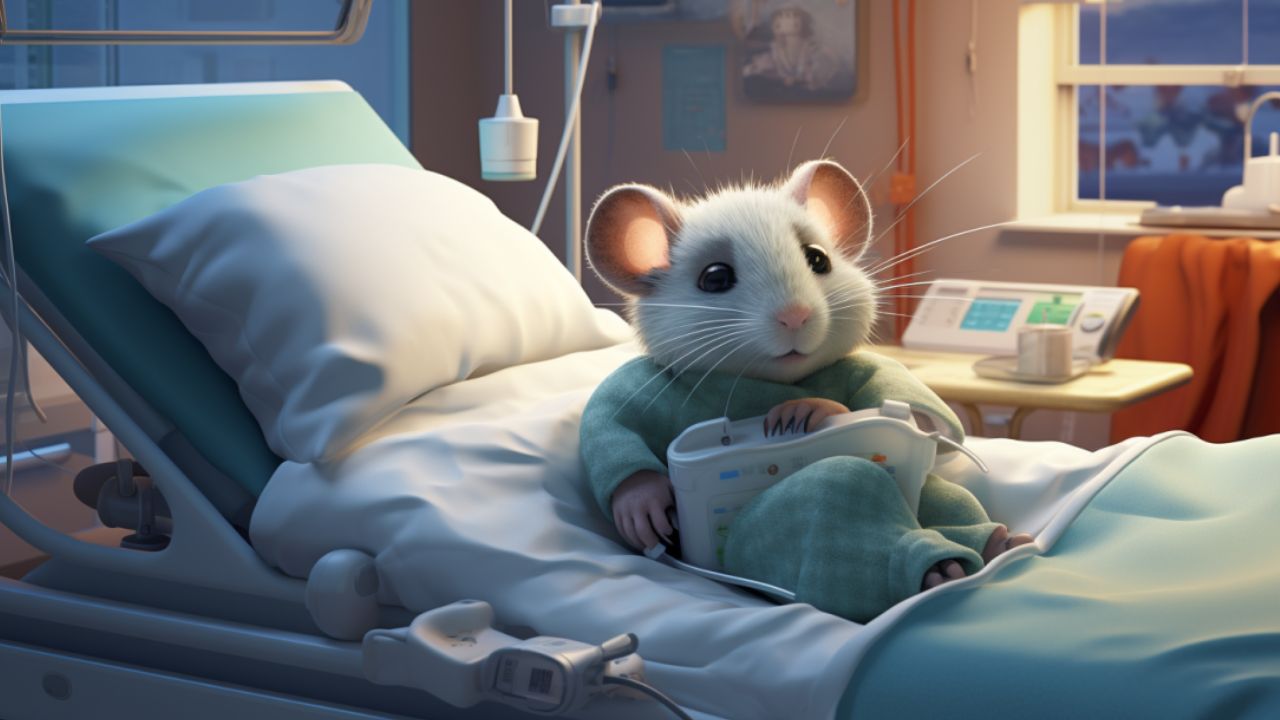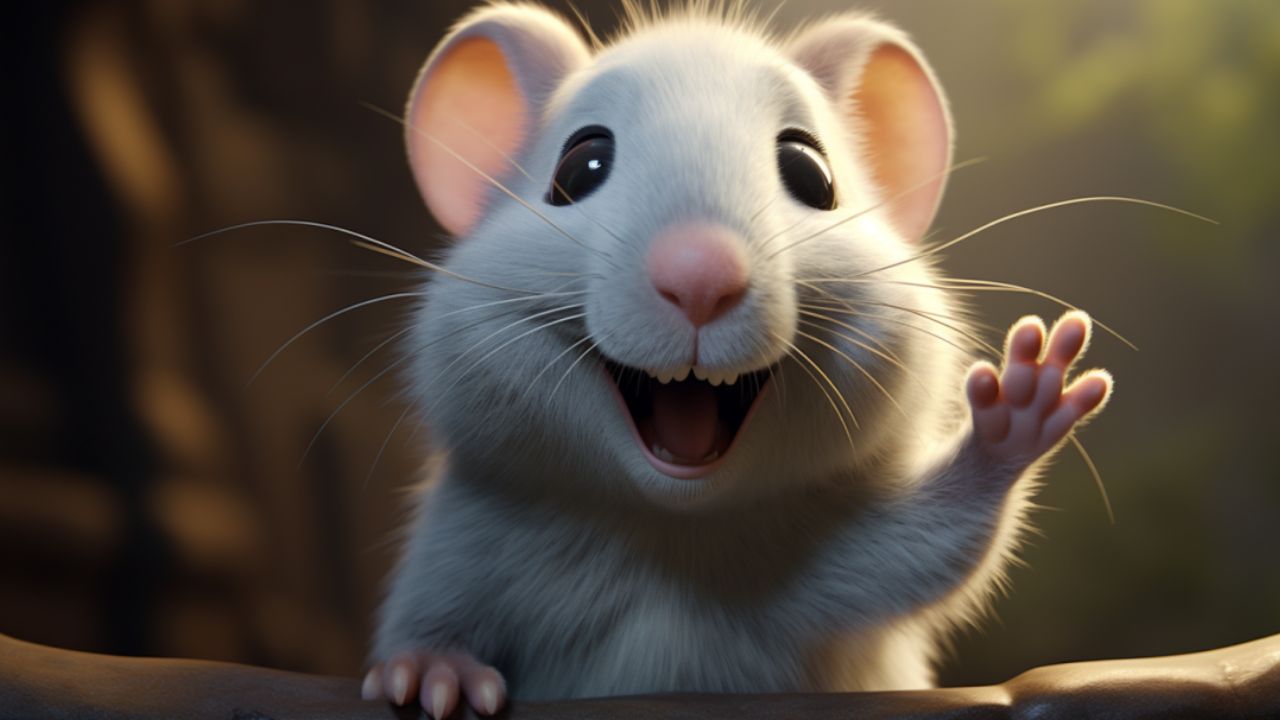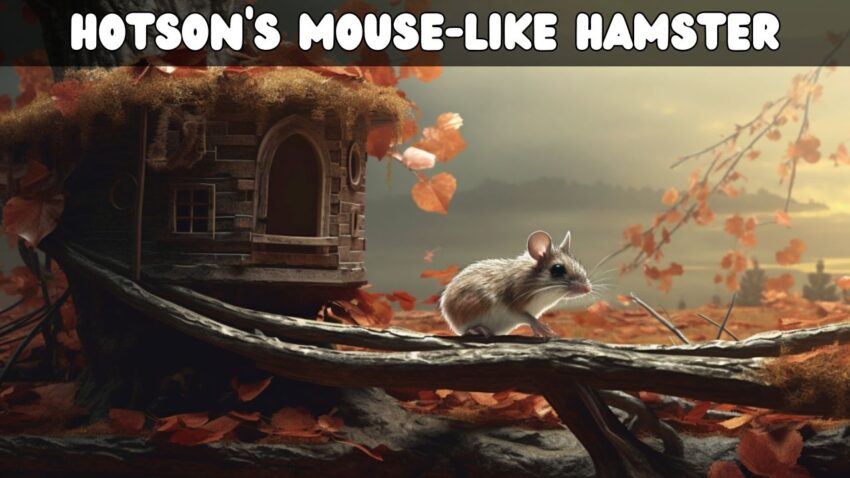The world of hamsters is vast, dotted with numerous species that each bring their unique charm to the table. However, few are as intriguing as the Hotson’s Mouse-like Hamster. This species, with its distinctive attributes, captures the fascination of many enthusiasts and researchers alike. In this piece, we embark on an enlightening voyage, meticulously unraveling the many layers of the Hotson’s Mouse-like Hamster’s existence.
The Allure of the Hotson’s Mouse-like Hamster
The Hotson’s Mouse-like Hamster isn’t just another rodent; it’s an embodiment of nature’s wonder. Its intriguing name alone piques curiosity, hinting at its mouse-like attributes yet distinctly setting it apart as a hamster. As we delve deeper, this species will reveal its myriad secrets, from its natural behaviors to its place in the larger ecosystem.
A Comprehensive Exploration Awaits
This article promises a detailed and thorough exploration of the Hotson’s Mouse-like Hamster. From understanding its origins and natural habitat to its role in modern pet culture, we’ve left no stone unturned. Frequent mentions of the “Hotson’s Mouse-like Hamster” not only serve SEO purposes but also emphasize the significance of this exceptional species in the vast world of hamsters.
Overview

In the vast and varied world of hamsters, there are a few species that evoke intrigue and fascination due to their unique characteristics and lesser-known histories. One such remarkable species is the Hotson’s Mouse-like Hamster. This small creature, despite its modest size, has an expansive tale to tell, intertwining its natural origins with its modern presence in homes across the globe. Through this section, we shall journey through time, retracing the steps of this hamster species, exploring its roots, understanding its appeal, and unraveling its transition from wild landscapes to domestic comfort.
A Detailed Historical Journey: The Chronicles of the Hotson’s Mouse-like Hamster
Hamsters have been around for ages, but the tale of the Hotson’s Mouse-like Hamster is particularly unique. Named due to its physical resemblance to mice, this hamster carries with it the legacy of ages past. Its evolution has been marked by various environmental challenges and adaptations, culminating in the creature we recognize today. Various archaeological and scientific expeditions have revealed clues about its ancient habitats, dietary patterns, and social behaviors, painting a detailed picture of its past life and survival strategies.
The Two Worlds: Wild Terrains and Domestic Nooks of the Hotson’s Mouse-like Hamster
The Hotson’s Mouse-like Hamster, while having a history deeply embedded in the wild, has in recent times found its way into the hearts of humans and the warmth of their homes. Their transition from being creatures of the wild terrains—navigating challenges, seeking food, and evading predators—to becoming beloved pets is a testament to their adaptability. Today’s domesticated versions enjoy the luxuries of regular meals, affectionate playtimes, and safe enclosures. Yet, in the wild expanses, their kin continue to display the hardy behaviors and survival tactics that have kept the species going for generations. This juxtaposition of a life in the wild against the comfort of domesticity enriches our understanding and appreciation of the Hotson’s Mouse-like Hamster’s versatility and resilience.
Natural Habitat

The Earth, with its diverse terrains and climates, has nurtured numerous species in its vast ecosystems, each adapted to its specific niche. One such intriguing inhabitant is the Hotson’s Mouse-like Hamster. Through eons of evolution, this hamster has made certain geographic locales its home, drawing sustenance and shelter from specific environments. By understanding its natural habitat, we gain insights into its evolutionary journey and survival tactics. In this section, we will embark on a detailed exploration of the natural settings that this unique species calls home.
Geographic Strongholds: The Homelands of the Hotson’s Mouse-like Hamster
While hamsters as a general category can be found in various parts of the world, the Hotson’s Mouse-like Hamster has specific regions that it predominantly inhabits. These are areas where it has not only survived but thrived, capitalizing on the resources available. From vast stretches of meadows to dense undergrowths, these geographic pockets have provided the hamster with the necessary shelter against predators and environmental extremities. Their presence in these areas is a testament to their ability to adapt, reproduce, and sustain their populations effectively.
Climate and Landscape: The Perfect Blend for Survival
The Hotson’s Mouse-like Hamster’s preference for certain terrains over others is intricately linked to the climate of those regions. A mild to moderately cool climate, with predictable seasonal variations, often proves ideal for their survival. These conditions offer them a balance, allowing for periods of activity interspersed with hibernation. The landscapes they choose are typically characterized by abundant vegetation, providing them with both food and shelter. Rich, loamy soils are perfect for them to dig burrows, which serve as resting places and safe havens from predators. Proximity to water sources, diversity in plant life for food, and the availability of hiding spots from predators, like rocks or dense shrubs, further define their ideal habitats. Understanding these environmental determinants gives us a clearer picture of the life and challenges of the Hotson’s Mouse-like Hamster in its natural setting.
Physical Characteristics

The animal kingdom is a treasure trove of diversity, with each species flaunting unique physical attributes that distinguish it from the rest. The Hotson’s Mouse-like Hamster, with its intriguing name, is no exception. This species possesses a range of physical characteristics that make it both captivating to observe and interesting to study. While its name might suggest certain attributes, there’s more to this hamster than just being “mouse-like.” In this section, we’ll unravel the mysteries of its anatomy, from its size and color gradient to those features that truly set it apart.
Anatomy and Size: Delicate Yet Distinctive
The Hotson’s Mouse-like Hamster is often smaller than some of its hamster cousins, which may contribute to its “mouse-like” moniker. Typically, they sport a slender and elongated body that allows them agility and swift movements. Their average size ranges from a mere few inches, making them a compact creature. This size, combined with their lightweight build, often aids them in quick burrowing or escaping from potential threats.
Color Gradient: A Symphony of Shades
At first glance, the Hotson’s Mouse-like Hamster exhibits a coat that’s a blend of earthy tones. From browns to grays, with possible patches of white or cream, these hamsters mirror the terrains they inhabit, an evolutionary tactic perhaps to blend into their surroundings. Their fur is usually dense and soft to the touch, serving as insulation against the cold. The underbelly often is of a lighter shade, contrasting with the darker dorsal side. Their eyes, tiny yet sparkling, often possess a dark hue, and their ears, while small, stand pronounced against their head, giving them a perpetually alert look.
Striking Features: Beyond the Basics
What truly differentiates the Hotson’s Mouse-like Hamster from its peers are some of its unique features. Their whiskers, long and sensitive, play a crucial role in their navigation, especially in the dark or while burrowing. Their tail, unlike some other hamster species, might be more pronounced and could possess a hairy tuft at its end. This tail aids in balance, especially when the hamster is on the move or exploring unfamiliar territories.
The physical attributes of the Hotson’s Mouse-like Hamster, while delicate and petite, are a testament to nature’s ability to craft creatures perfectly suited to their environments. Every detail, from their color to their anatomy, tells a story of evolution, survival, and the delicate balance of nature.
Behavior and Temperament

Understanding the behavior and temperament of any species provides a window into its natural inclinations, survival strategies, and social constructs. The Hotson’s Mouse-like Hamster, with its distinct physical appearance, brings to the table a plethora of fascinating behavioral patterns. From their day-to-day activities to the way they interact with their kind and the world around them, these hamsters exhibit behaviors that reflect their adaptability and evolution. Let’s journey into their world to uncover what makes the Hotson’s Mouse-like Hamster tick.
Day-to-Day Activities: A Life on the Move
The Hotson’s Mouse-like Hamster is an active creature, especially when the sun dips below the horizon. Predominantly nocturnal, their night is filled with a frenzy of activities. They can often be seen scurrying about, foraging for food, or meticulously grooming themselves. Their agility is evident in their swift movements, whether they are darting to a safe spot or engaging in playful chases. During the day, they prefer the safety and comfort of their burrows, catching up on their rest, and conserving energy for the night ahead.
Group Dynamics: Social or Solitary?
When it comes to social interaction, the Hotson’s Mouse-like Hamster displays a mix of solitary and communal tendencies. While they might occasionally enjoy the company of their kin, especially during their younger days, as they mature, a more territorial demeanor emerges. It’s not uncommon for adult hamsters of this species to establish and fiercely guard their territory, signaling a preference for solitary living. However, under the right conditions and with ample resources, they can cohabit peacefully, albeit with a clearly defined personal space.
Temperament: The Delicate Balance of Curiosity and Caution
Possessing a curious nature, the Hotson’s Mouse-like Hamster is often keen to explore its surroundings, sniffing out new scents or investigating unfamiliar objects. However, this curiosity is always tempered with caution. They’re quick to retreat at the slightest hint of danger, relying on their keen senses to detect potential threats. When handling them, a gentle approach is recommended, as they can be skittish. With time, patience, and consistent gentle interactions, they can become more accustomed to human touch.
Unique Behaviors: What Sets Them Apart?
One of the most distinctive behaviors observed in this species is their intricate burrowing patterns. These aren’t just mere holes in the ground; they’re well-thought-out networks of tunnels and chambers, each serving a purpose, from food storage areas to rest spots. Their meticulous grooming ritual, involving both their paws and tongue, is a sight to behold, ensuring they’re always in top shape. Additionally, their vocalizations, a mix of soft chirps and louder warning calls, offer a fascinating insight into their communicative methods.
In summary, the Hotson’s Mouse-like Hamster, with its unique set of behaviors and temperaments, is a testament to the complex world of small mammals. Whether it’s their intricate burrowing techniques, their nocturnal adventures, or their delicate balance between curiosity and caution, they continue to be a source of fascination for enthusiasts and researchers alike.
Diet and Nutrition

Nutrition plays a pivotal role in ensuring the well-being and longevity of any species. For the Hotson’s Mouse-like Hamster, a diet that mirrors their natural intake in the wild is crucial for optimal health. Being omnivores, these hamsters have a varied palette, consuming both plant-based foods and animal matter. Let’s embark on a gastronomic tour of what keeps these intriguing creatures thriving and also address any potential dietary pitfalls to avoid.
Dietary Preferences: A Mix of Greens and Protein
In their natural habitat, Hotson’s Mouse-like Hamsters have evolved to make the most of available resources. Seeds, nuts, and grains constitute a significant part of their diet, providing them with essential carbohydrates and fats. These tiny foragers also nibble on a variety of greens, fruits, and vegetables. This not only diversifies their diet but also ensures they receive vital vitamins and minerals.
But their dietary habits don’t just stop at plants. Being opportunistic eaters, they’ll often consume small insects, worms, and other protein sources when available. This protein intake is particularly important during their growth phase and can be vital during reproductive periods.
Essential Nutritional Elements: Balancing the Diet
While grains and seeds are staple foods for the Hotson’s Mouse-like Hamster, balance is the key. Too much of one nutrient can lead to deficiencies in others. Therefore, a diversified diet is of the essence. Fresh vegetables, especially leafy greens, contribute fiber and vital nutrients. However, it’s crucial to ensure these are introduced gradually to avoid digestive issues.
For those raising these hamsters in captivity, commercial hamster food can provide a balanced base diet. Still, supplementing this with fresh foods is advised to mimic their natural diverse diet. Offering occasional treats of boiled eggs or lean meats can satisfy their protein requirements, especially for young, pregnant, or nursing hamsters.
Foods to Steer Clear Of: What’s Off the Menu?
Not everything that’s edible for humans is safe for the Hotson’s Mouse-like Hamster. Certain foods can be harmful and should be avoided. These include:
- Toxic Vegetables and Fruits: While many fruits and vegetables are beneficial, others like onions, garlic, and raw potatoes can be toxic. Similarly, fruits with pits, such as cherries and apricots, should be given with caution, ensuring the pit is removed.
- High-Fat and Sugary Foods: Foods high in fats, salt, or sugars can harm their metabolism and lead to obesity or other health issues.
- Processed Foods: Anything with artificial additives, preservatives, or chemicals is a strict no-no.
In conclusion, a balanced and varied diet is the cornerstone of health for the Hotson’s Mouse-like Hamster. By understanding their dietary preferences, providing essential nutrients, and avoiding potential hazards, one can ensure these hamsters lead a robust, active, and fulfilling life.
Housing and Environment

The health, well-being, and happiness of the Hotson’s Mouse-like Hamster largely depend on the quality of its housing and environment. As with any pet, replicating a habitat that closely mimics its natural environment can make a world of difference in its quality of life. If you’re looking to provide the best home for this distinct hamster species, you’re in the right place. Let’s delve into the details of creating a habitat that resonates with the needs and preferences of the Hotson’s Mouse-like Hamster.
Crafting the Perfect Home: Cage Dimensions and Design
When selecting a cage, size matters. A spacious cage not only offers ample room for movement but also provides space for toys, exercise equipment, and separate zones for different activities. For a single Hotson’s Mouse-like Hamster, a cage measuring at least 24 x 12 x 12 inches (L x W x H) is recommended. If housing multiple hamsters, ensure to upsize accordingly.
Vertical space is also beneficial. These hamsters are adept climbers and will appreciate multi-level cages. Equipping the cage with platforms, ladders, and hammocks can provide a dynamic environment that keeps them active and engaged.
The cage material is equally crucial. Wire cages with a solid base are popular, offering good ventilation. However, ensure the wire spacing is no more than half an inch apart to prevent escape attempts.
Bedding Basics: Comfort and Cleanliness
Bedding serves multiple purposes – it cushions the hamster’s feet, aids in burrowing, and helps manage waste. A depth of 2-3 inches is ideal to allow the Hotson’s Mouse-like Hamster to indulge in its natural burrowing instincts. Paper-based beddings are absorbent and less likely to cause respiratory or allergic reactions. Avoid cedar or pine shavings, as the oils they contain can be harmful to hamsters.
Regular cleaning is essential. While spot-cleaning can be done daily to remove soiled areas, a complete change of bedding should be done every week or two, depending on the cage size and number of inhabitants.
Habitat Elements: More Than Just a Cage
An engaging environment promotes both physical and mental well-being. Consider these elements:
- Exercise Wheel: A must-have. Ensure it’s solid-surfaced to prevent injuries and is large enough to prevent back arching when the hamster runs.
- Hideouts: Hamsters are naturally shy creatures. Offering small houses or tubes can give them a sense of security.
- Toys and Chewables: Wooden blocks, ropes, and puzzle toys can keep them entertained. The added benefit of wooden toys is that they help in wearing down their ever-growing teeth.
- Sandbox: Offering a sand bath can help hamsters keep their fur clean, as they roll in it to remove excess oils.
- Water and Food Dishes: A drip bottle for water is hygienic, and a ceramic food dish can prevent tipping.
Environmental Control: Temperature and Lighting
The Hotson’s Mouse-like Hamster prefers a stable environment. A temperature range of 65-75°F (18-24°C) is ideal. Avoid placing the cage in direct sunlight, drafty areas, or near vents. Regular light and dark cycles are essential for their circadian rhythm, so try to mimic natural day-night patterns.
In sum, creating a haven for the Hotson’s Mouse-like Hamster requires a blend of space, comfort, and stimulation. By offering them a habitat that ticks all these boxes, you’re setting the stage for a content, healthy, and long-lived hamster companion.
Health and Wellness

The Hotson’s Mouse-like Hamster, like all pets, thrives when given the right care and attention. By ensuring that their health and well-being are catered to, owners can enjoy many rewarding moments with these little creatures. While they are generally resilient, these hamsters are not immune to certain health challenges. It’s essential for owners to recognize the signs and respond swiftly to ensure their hamster’s longevity and quality of life.
Health Challenges and Prevention
- Respiratory Infections: Common symptoms include labored breathing, nasal discharge, and wheezing. Keeping their cage clean, ensuring proper ventilation, and avoiding drafty locations can reduce the risk.
- Digestive Troubles: Diarrhea or ‘wet tail’ can be a concern. It can result from dietary changes or bacterial infections. Offering a stable diet and keeping their habitat sanitary are preventive measures.
- Parasitic Infestations: Mites, fleas, and ticks can be an issue. Regularly cleaning and changing the bedding can help keep these pests at bay.
- Overgrown Teeth: Hamster teeth continually grow. Providing chew toys and a diet that requires gnawing can help naturally wear down their teeth.
- Skin Problems: Dry skin, loss of fur, or lesions can signal fungal infections or other skin diseases. Maintaining cleanliness and monitoring your hamster for external parasites can prevent many skin conditions.
- Eye Infections: Watery or crusty eyes can be an indication. Ensure the bedding is dust-free and clean any wet spots in the cage promptly.
Recognizing the Warning Signs
It’s crucial to regularly observe the behavior and physical appearance of your Hotson’s Mouse-like Hamster. A change in behavior, such as lethargy, refusal to eat, or abnormal aggressiveness, can be indicative of an underlying issue. Physically, a dull coat, hunched posture, or sudden weight loss are signs that shouldn’t be ignored.
Daily interactions, like feeding and playtime, can be prime opportunities to look for abnormalities or changes in behavior. A hands-on approach, where you gently handle and inspect your hamster, can provide further insights into their health condition.
The Role of Veterinary Care
Despite all preventive measures, there will be times when professional intervention is necessary. Finding a veterinarian experienced in small mammal care, ideally before any health issues arise, can be beneficial. Routine check-ups can help catch potential problems early on, making treatments more effective.
If your Hotson’s Mouse-like Hamster exhibits signs of distress or illness, it’s essential to consult with a veterinarian promptly. Early intervention can mean quicker recovery and can prevent more severe health complications down the line.
In summary, the health and well-being of the Hotson’s Mouse-like Hamster are intertwined with the care they receive. By being attentive, proactive, and equipped with knowledge, owners can ensure that their furry companion leads a healthy, content, and vibrant life.
Breeding

Breeding hamsters, while an intriguing venture, demands a nuanced understanding of their biology, habits, and environment. For anyone considering breeding Hotson’s Mouse-like Hamsters, there’s a multitude of factors to be aware of to ensure the well-being of both the parents and the offspring. While breeding might seem straightforward, it’s imperative to approach it with a balance of knowledge, patience, and ethics.
Breeding Cycles and Mating Rituals
Hotson’s Mouse-like Hamsters, like many rodent species, have specific breeding cycles, often influenced by factors such as age, seasonality, and environmental cues.
- Age of Maturity: These hamsters typically reach reproductive maturity around 8 to 10 weeks of age. However, for optimal health and to ensure a healthy litter, it’s generally recommended to wait until they are 3 to 4 months old before initiating the breeding process.
- Estrous Cycle: Female Hotson’s Mouse-like Hamsters come into estrus (become receptive to mating) roughly every four days. During this period, they emit a distinct odor and might display more restless behavior.
- Mating Rituals: The mating process can be brief, but it’s not uncommon for hamsters to be aggressive during these encounters. It’s vital to monitor them closely to ensure neither party gets injured. After mating, it’s advisable to separate the male from the female to prevent overbreeding and to give the female a peaceful environment to carry her pregnancy.
Ideal Breeding Environment
Creating a conducive environment for breeding goes a long way in ensuring successful mating and a healthy litter.
- Nesting Area: A comfortable, secluded nesting area, filled with ample bedding, allows the female to prepare for the arrival of her pups.
- Stable Conditions: Consistent temperature, devoid of extreme fluctuations, and a quiet environment can help reduce stress during pregnancy.
- Nutrition: A pregnant or nursing hamster has increased nutritional needs. Supplying a protein-rich diet can aid in the healthy development of the pups and maintain the mother’s strength.
Ethical Considerations
Breeding is not just a mechanical process; it comes with responsibilities.
- Overpopulation: Hamsters reproduce rapidly, and before one decides to breed, they should have a plan for the offspring. Whether it’s ensuring homes for all of them or collaborating with ethical pet shops, a clear plan prevents unwanted hamsters.
- Genetic Health: Continuously breeding the same hamsters or breeding close relatives can lead to genetic issues in the offspring. Rotating breeding pairs or introducing new genetics into the breeding pool can help mitigate this.
- Post-Birth Care: After birth, while it’s essential to give the mother her space, it’s equally vital to check on the health of the pups, ensuring they are feeding and developing as they should.
In conclusion, breeding Hotson’s Mouse-like Hamsters is a task that calls for a blend of knowledge, commitment, and ethical considerations. By taking a conscientious approach, breeders can ensure the health and happiness of both the parent hamsters and their litters, while also contributing positively to the understanding and appreciation of this unique species.
FAQs

Hamster enthusiasts, first-time owners, and even seasoned hamster caregivers often have questions when it comes to the unique Hotson’s Mouse-like Hamster. This section aims to tackle some of the most frequently asked questions to provide clarity and guidance.
What is the lifespan of a Hotson’s Mouse-like Hamster?
The Hotson’s Mouse-like Hamster typically has a lifespan of 2 to 3 years when cared for in captivity. This can vary based on factors like genetics, diet, overall health, and living conditions. Regular veterinary check-ups and a balanced diet can contribute to their longevity.
How can I distinguish a Hotson’s Mouse-like Hamster from other hamster species?
This species boasts specific physical characteristics that set them apart, such as their unique fur pattern, size, and particular facial features. Observing their behavior and physical traits in comparison to other hamster species can help in identification.
Are they nocturnal or diurnal?
Like many hamster species, Hotson’s Mouse-like Hamsters are primarily nocturnal, meaning they’re most active during the night. However, they can occasionally exhibit crepuscular behavior, being active during twilight hours (dawn and dusk).
What should their diet mainly consist of?
These hamsters thrive on a balanced diet of commercial hamster pellets, fresh vegetables, fruits, and occasional protein sources like boiled eggs or mealworms. Always ensure that their water source is clean and fresh.
How often should I clean their cage?
A thorough cleaning once a week is recommended. However, spot cleaning, where you remove soiled bedding and replace it with fresh bedding, should be done daily.
Is it safe to house multiple Hotson’s Mouse-like Hamsters together?
This largely depends on their gender and temperament. While some may coexist peacefully, others might be territorial. Always monitor their behavior closely when introducing a new hamster to an existing one.
Do they need exercise outside their cage?
Yes, like all hamsters, the Hotson’s Mouse-like Hamster benefits from regular exercise. An exercise wheel in their cage and occasional supervised roaming in a hamster-safe environment can be beneficial for their physical and mental health.
Are there any specific health issues to watch out for?
While they can suffer from common hamster ailments like wet tail, respiratory issues, or tumors, regular vet check-ups can help in early detection and treatment. It’s essential to be familiar with their normal behavior so that any deviations can be promptly addressed.
By staying informed and seeking answers to any uncertainties, owners can ensure a healthy, happy, and fulfilling life for their Hotson’s Mouse-like Hamster. As always, when in doubt, consulting a veterinarian or hamster expert is advised.
In Conclusion

The Hotson’s Mouse-like Hamster is a marvel in the rodent realm. A blend of intriguing physical attributes, distinct behaviors, and specific needs, this species offers a fascinating glimpse into the world of unique hamster varieties. From their natural habitats, shaped by the landscapes they’ve evolved in, to their interactions and dynamics in a domestic setting, every aspect of their existence showcases the rich tapestry of life they represent.
Essential Takeaways
Diving into this article, readers have embarked on a comprehensive journey, understanding the depth and breadth of information regarding the Hotson’s Mouse-like Hamster. We’ve unraveled the mysteries of their diet, decoded the best practices in their housing, and shed light on the nuances of their health and breeding. Through it all, the central theme remains: understanding and appreciation for this species are paramount for their well-being.
Spreading Knowledge & Advocating Responsibility
It is our collective responsibility as pet enthusiasts, potential owners, or curious readers to champion the cause of these small creatures. By sharing this article, we not only disseminate knowledge but also promote a culture of informed pet ownership. Adopting any pet, including the Hotson’s Mouse-like Hamster, should always be done with thorough understanding and commitment. After all, these little beings rely entirely on us for their care, happiness, and health.
In the end, may our approach towards the Hotson’s Mouse-like Hamster and all creatures be marked by empathy, understanding, and a deep-seated respect for the life they lead. Here’s to a world where every pet finds a loving, informed, and responsible home!

